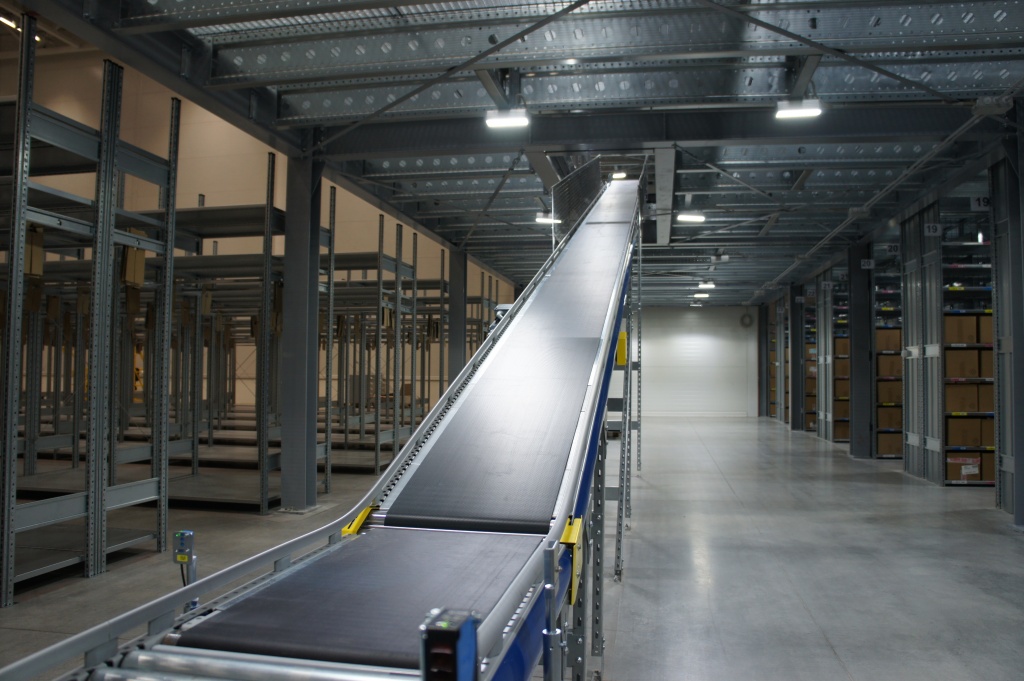Belt conveyor - everything you need to know about conveyor belts

Belt conveyor – a device in the form of a belt, designed for the hassle-free transportation of all kinds of items (cargo) – piece, bulk. It can function continuously, interacts with the working body.
This is the most common transporting machine. Such mechanisms are necessarily present:
- in mines and mines;
- in factories;
- in agricultural enterprises.
The working side of the tape can have a significant angle of inclination – up to 30 °. The type of construction is selected depending on the type of tasks performed.
Varieties of belt conveyors
These units are:
- portable;
- mobile;
- stationary;
- swiveling.
If there is too much material to be moved, they are transported by stationary machines. The distance is from 3 m to 3 thousand m. Conveyors are also arranged in series, in this way moving materials for tens of kilometers. For example, from the port to the factory or to the railway junction. If you have to move materials in a small volume over a distance of at least 2 m and a maximum of 20 m, then portable, mobile mechanisms are used.
The main advantage of any conveyor transport system
The installation of such mechanisms allows you to significantly increase labor productivity. The equipment works automatically and continuously, which makes it possible to transport goods over long distances, while minimizing production costs.
The conveyor belt is the most important part of the conveyor installation, it must have special advantages. Then the machine will work efficiently and smoothly.
The world’s best manufacturers produce belts for conveyors from materials with different strengths, which are based on:
- technical fabrics;
- metal polymer cables.
Models of conveyor belts
General purpose belts
Materials with:
- temperature up to 60 °С;
- low abrasiveness.
Abrasion-resistant belts
Transported:
- pieces of rocks up to half a meter in diameter;
- ore materials;
- abrasive (highly abrasive) materials;
- logs up to 0.9 m in diameter;
- clay;
- row coal.
Frost-resistant tapes
The conveyor is able to function in the northern regions, even in extreme frosts – up to 60 degrees.
Heat-resistant belts
Transported materials can reach temperature from +100 °C up to +200 °С. For a short time, the system is able to operate even at +300 °C. Such tapes are in great demand at enterprises:
- mining;
- non-ferrous, ferrous metallurgy;
- foundries;
- producing building materials .
Oil-resistant belts
The conveyor conveys materials with a high content of:
- resin;
- mineral (technical) oil;
- vegetable oil;
- lubricants.
Oil heat and frost resistant tapes
The temperature of the delivered materials can reach a minimum of -45 °C, a maximum of +100 °C. They contain lubricants, resinous components, various oils.
Acid-alkali-resistant belts
The canvas is suitable for moving aggressive compounds – slightly alkaline, slightly acidic. Their concentration can be a maximum of 20%.
Conveyor belts for mines
They are used in mines, mines, and other similar conditions where there is a high gas content and dustiness .
Food belts
Food products are transported – packaged, without packages.
How the transport belt is operated
If the conveyor operates under heavy load, then devices are introduced into the design that reduce the effects of impacts on the belt. In this way, it is possible to prevent longitudinal gusts of the web. A specialist monitors the serviceability of the tape and its work. In a special journal, notes are made regarding:
- its technical characteristics;
- service life;
- reasons for replacement.
Tape storage rules
The room must be closed, keeping the temperature from -5 °С to +30 °С. Distance from heating devices – at least 1 m.
The conveyor belt should not be exposed to:
- direct sunlight;
- aggressive chemicals – alkalis, acids;
- refined products;
- oil;
- fumes of gasoline, kerosene;
- other compounds that can destroy fabric or rubber .
The tape is laid only horizontally, maximum – in 2 rows. And after delivery, the tape should be kept at a temperature of 15-25 degrees for at least a day. Only then can it be mounted.
